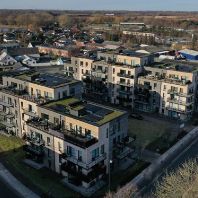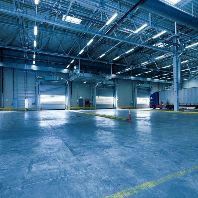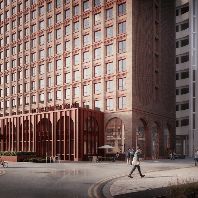Soaring 333 meters high with 72 stories and 480 suites, Rose Rotana Tower in Dubai leads the list of the 10 tallest buildings completed in 2007, the Council on Tall Buildings and Urban Habitat (CTBUH) reported recently. The tower, which is developed by Bonyan International Investment Group, is also regarded as the world's tallest single-use hotel building.
Of further relevance in the list is the fact that the Middle East region has displaced China by having the most buildings in the 'annual tallest constructed' list. Four out of the tallest ten buildings built during 2007 are located in the UAE and Bahrain, which reflects the massive building boom that continues in the Middle East.
According to a recent CTBUH report: "The New York Times Building in the United States (at 319 meters) and the China International Center Tower (at 269 meters) were second and third respectively. While, the 268 meter Naberezhnaya Tower in Moscow was fourth, the 261 meter Hotel Panorama in Hong Kong was fifth, the 260 meter Dual Tower 1 and 2 in Manama Bahrain were sixth and seventh respectively. Emirates Marina Serviced Apartments and Spa at 254 meter was eight and the 250 meter Park Tower in China was ninth, while the 248 meter Mid Town Tower in Japan came in at tenth place."
To be eligible for consideration, the buildings should have been completed in 2007 and either be "open for business" or at "least partially occupied", according to CTBUH Executive Director Antony Wood. The criteria for the tallest buildings in the world includes any building where the majority of the floors are utilized for residential, business or manufacturing purposes.
"When speaking of the tallest buildings in the world, it is important to specify exactly what is being measured. The CTBUH is the authoritative source for information about the tallest buildings in the world, and our list of the tallest buildings - drawn from an extensive database - is based on the height of the building to the structural or architectural top, which includes spires and pinnacles, but does not include antennas, masts or flagpoles," Wood explained.
"As cities and their skylines continue to evolve, tall buildings can make positive contributions to city life," argued Wood. "They can affect the image and identity of a city as a whole and serve as beacons of regeneration and stimulate further investment. Therefore, tall building design and construction has a role in addressing the need for both a dense, sustainable city and all-inclusive urban living."
Contrary to prevalent assumptions just a decade or two ago that the tallest buildings in the world would be located in the United States, CTBUH's list of the projected twenty buildings set to be the world's tallest in 2020 shows that nine of the tallest buildings in the world will be in Asia, eight in the Middle East, two in North America and one in Europe.
According to the council, "Al Burj tower in the UAE will lead the list of the 20 tallest buildings in 2020 if built, followed by Mubarak Tower in Kuwait and Burj Dubai in the UAE. The Doha Convention Center in Qatar will come in at tenth and the Pentominium Tower and Burj Al-Alam in Dubai will be 12th and 13th respectively. Abraj Al-Bait in Saudi Arabia will be 17th and DAMAC Heights in Dubai will be 19th."
"The most startling feature of the 'Tallest 20 in 2020' is that we can see in little more than a decade that the world's current tallest building






